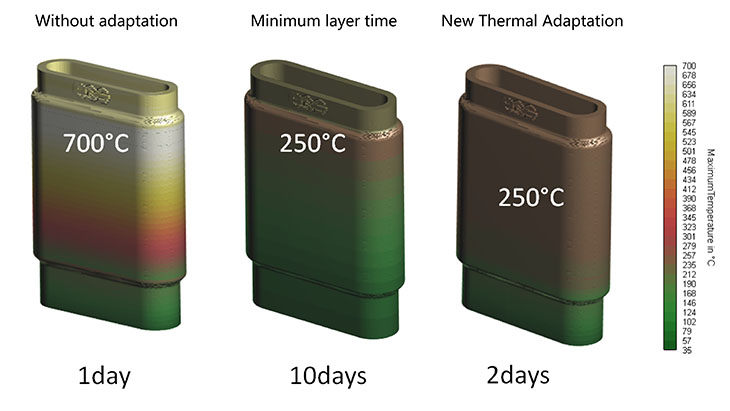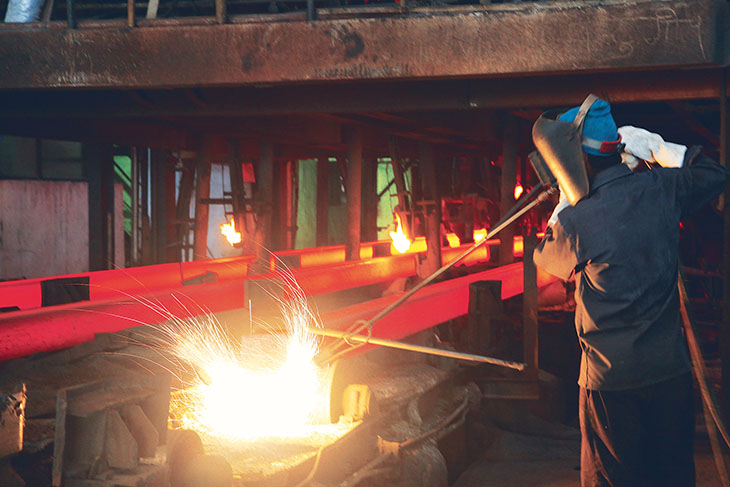Additive Works releases cutting-edge solution to ensure thermal stability for Laser Beam Melting processes
Bremen, Germany – December 7, 2020 – Additive Works, a leading provider of highly usable solutions for additive manufacturing and laser beam melting (LBM) technology, released Amphyon 2021, the latest version of the company's simulation-driven process software for powder bed-based, laser beam melting additive manufacturing processes. Among several other major enhancements, the 2021 version includes the new Thermal Adaption Module for job preparation based on thermal process simulation data.
The Thermal Adaptation Module allows users to solve problems induced by increasing temperature during the LBM process by adapting the layer times. As this is usually avoided by using fixed minimum layer times that slow down the entire process, the use of simulation to calculate the individual waiting times per layer significantly reduces the process duration. Furthermore, for complex build jobs, engineers can easily derive the right layer times to achieve reproduceable shapes and material properties across different nesting and build job setups.
In laser powder bed fusion processes, metal powder is solidified to layers by selectively melting cross sections of a geometry. For the generation of components, layers are added on top of previous layers. Depending on the geometry, nesting, process parameters, etc. of a build job, temperature may increase significantly with the height of the component leading to insufficient part quality. For multi-laser and large machines, in particular, that inputs a vast amount of energy into a workpiece within a short amount of time, this is problematic. As a result, processes need to be slowed down again to create reproduceable and reliable results. But what is the right temperature range and how long do you have to wait to avoid the known issues without unnecessarily slowing down the process?
The answers to these questions can now be found with the new Thermal Adaption Module added to Amphyon, Additive Works’ solution for simulation-based job preparation. Using Amphyon’s thermal simulation and optimization capabilities, a target temperature can be entered before the simulations start. Based on that target temperature, build rates will be adapted automatically, preventing temperatures exceeding the target temperature in all components. By using a virtual physics-based approach rather than trial and error, waiting times for each individual layer can be precisely determined. Hence, the additional time for each layer corresponds with the time it takes to cool down to the target temperature. For layers where overheating is not observed (e.g. close to the base plate), no additional time is added, of course.
“In addition to many other enhancements of Amphyon 2021, such as an improved material handling, the new Thermal Adaptation Module is a game changer,” said Dr. Hongxiao Xu, CTO at Additive Works. “Ensuring thermally stable LPBF processes without sacrificing lead times to a fixed minimum layer time will expand the boundaries of AM business cases.”
For thin parts with massive features in their upper regions, the advantage of this approach can easily be evaluated. Assuming that such a part is heating up to 700°C in a build job that takes 21 hours for printing, while considering a minimum layer time for all layers to stay below 250°C, will result in a build job that takes about 10 days. Using the new simulation-based approach, the part can be printed within 2.5 days with the same result. Although the duration of the initial process is more than doubled, the duration to obtain a component of optimal quality is reduced by factor 4.
























